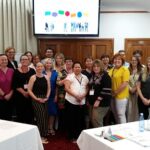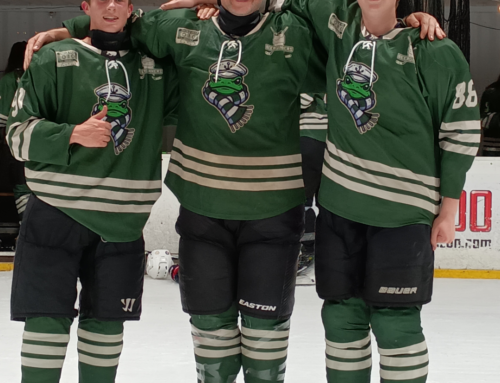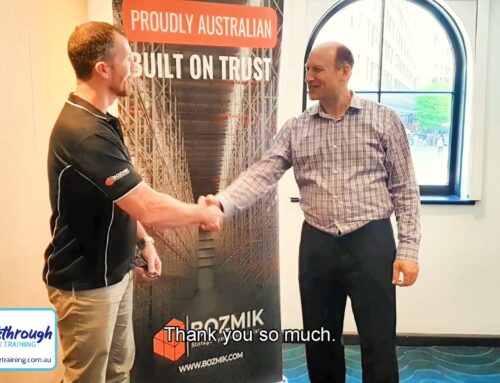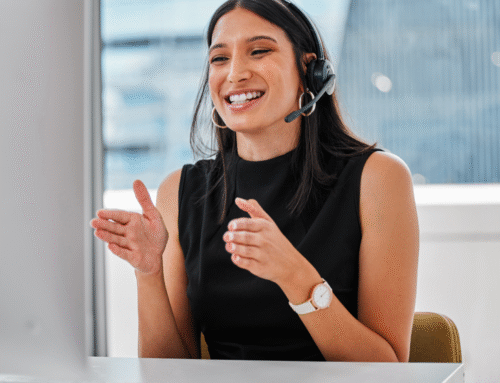 I’ve led hundreds of workplace trainings and team-building days, and here’s the headline from the front line: bonding together as a team is the big benefit. When people learn, practise and reflect together, something changes. The energy shifts. The language shifts. Decisions get cleaner. And momentum builds because everyone was part of the same experience — at the same time.
I’ve led hundreds of workplace trainings and team-building days, and here’s the headline from the front line: bonding together as a team is the big benefit. When people learn, practise and reflect together, something changes. The energy shifts. The language shifts. Decisions get cleaner. And momentum builds because everyone was part of the same experience — at the same time.
A recent highlight was a Team Building workshop my wife Nicole and I led for the leadership team at Chanel College. We featured our Life Languages Communication Breakthrough Training and watched 26 leaders lean in, listen and laugh their way through activities that became practical tools back at work. Judith Cullen, Chanel College’s Business Manager, summed it up perfectly:
“I think it brings a bond with people doing this together — if you go and do a workshop on your own you come back enthused but we have a group of 26 people who are going to be enthused and we all are getting something different from the workshop which will help us understand each other better…”
We captured Judith’s reflections on video, and it reminds me why I love this work — especially when I get to co-facilitate with Nicole. We bounce off each other, share real stories, and run activities that tie directly to the content so people remember and use it. That “learning chemistry” matters.
What executives ask me most is, “Does team building actually move the needle?” When it’s well-designed and led by engaging, passionate skilled facilitators, yes — and the evidence backs it. Below are the big wins I see consistently, plus what the research says.
The real-world benefits of team building and team training
- It boosts performance you can see – My experience: teams that train together improve how they coordinate, handle pressure and close loops. Meetings stop meandering, and projects move.
What research says: comprehensive teamwork training produces meaningful gains in teamwork behaviours and overall team performance across controlled studies—so it’s not just feel-good, it’s measurable [1]. - It upgrades the quality of conversations – My experience: progress isn’t about “more communication”; it’s about sharper listening, clearer framing and better follow-through.
What research says: meta-analytic evidence shows the quality of team communication (how well information is shared and elaborated) has a stronger link to performance than sheer volume or frequency [2]. - It creates psychological safety — the performance multiplier – My experience: when people feel safe to speak up, leaders get the truth early, ideas surface, and problems shrink in the daylight.
What research says: Google’s Project Aristotle highlighted psychological safety as the #1 factor in high-performing teams. It’s about equal turn-taking and conversational sensitivity, not perfect personalities [3]. - It supports the outcomes your board actually tracks – My experience: when communication tightens and expectations are clearer, engagement lifts — and you see fewer incidents, cleaner delivery and steadier retention.
What research says: decades of Gallup research link higher engagement with better productivity, profitability, retention and safety at the business-unit level [4]. - It works best when it’s more than “fun and games” – My experience: the memorable “fun” activities are the hook; the real value comes when we clarify roles, set goals and practise problem-solving with your real work in mind.
What research says: classic team-building meta-analyses show the biggest performance gains from role clarification, goal setting and problem-solving — not from activities without transfer to the day job [5]. - It benefits from a neutral, skilled outsider – My experience: an external facilitator can say the unsayable, surface patterns without politics and keep the room honest and productive.
What research says: implementation research describes how external facilitation accelerates change by coaching, coordinating and troubleshooting in ways insiders often can’t, while guidance on using external vs internal facilitators notes the objectivity and process discipline outsiders bring [6].
How we make the “bond” durable (not just a good day out)
Over the years, I’ve learned that the day itself is only half the story. The other half is translating the uplift into new norms. Here’s how we design for that:
- Shared language, fast adoption
Teams leave with a common, practical vocabulary. Instead of “We need better communication,” they can say, “Let’s slow down to clarify expectations,” or “Can we check assumptions before we escalate?” That shared language reduces friction and speeds alignment. - Real plays, not just play
We run activities that mirror real work: quick decision drills, role-plays with your scenarios, and debriefs that nail the “what will we do differently on Monday?” If an activity doesn’t transfer to your context, we cut it. - Leaders model it first
We invite leaders to role-model the behaviours in the room — asking better questions, pausing to summarise, and giving clear commitments. People mirror what leaders make normal. - “Tight–loose–tight” agreements
We co-create team agreements: tight on outcomes and responsibilities; loose on personal working styles; tight again on follow-up. That simple rhythm keeps autonomy high and confusion low.
How our Life Languages Communication Breakthrough Training fits in
Every team is a mosaic of communication preferences. Our Life Languages Communication Breakthrough Training gives your leaders and teams a clear lens — and tools — to adapt without losing their voice. Here’s what clients tell us they value most:
- Better meetings, fewer “re-meetings” – Because people understand how colleagues process information and make decisions, they present ideas in ways that land — and commitments are made the first time.
- Less friction in high-stakes moments – We teach practical de-escalation and “check for understanding” techniques that keep pressure conversations productive rather than personal.
- Faster onboarding to each other – New team members plug in faster because the team already has a shared map of styles and preferences.
- A culture where candid ≠ unkind – We normalise healthy challenge. People learn to disagree constructively and leave with relationships stronger, not strained.
If you’re exploring a team-building day, I’d be glad to tailor something to your context. And if you want a deeper dive into the communication piece we’ve been talking about, you can explore our Life Languages Communication Breakthrough Training here: https://www.breakthroughcorporatetraining.com.au/courses/life-languages-communication/
I’ll finish where I began: bonding together as a team is the big benefit. When the whole group learns at once, you don’t rely on one enthusiastic person to carry the torch. You get twenty-six torches — all pointed in the same direction.
#TeamBuilding #LeadershipDevelopment #EmployeeEngagement #PsychologicalSafety #CommunicationSkills #HealthyTeams #CorporateTraining #LifeLanguages #HybridTeams #HighPerformance
Sources (footnotes)
- McEwan, D., Ruissen, G. R., Eys, M., Zumbo, B. D., & Beauchamp, M. R. (2017). The Effectiveness of Teamwork Training on Teamwork Behaviors and Team Performance: A Systematic Review and Meta-Analysis. PLOS ONE. https://journals.plos.org/plosone/article?id=10.1371/journal.pone.0169604 PLOS
- Marlow, S. L., Lacerenza, C. N., Paoletti, J., Burke, C. S., & Salas, E. (2018). Does team communication represent a one-size-fits-all approach? A meta-analysis of team communication and performance. Organizational Behavior and Human Decision Processes. (accessible summary/PDF) https://psychiatry.ucsd.edu/research/programs-centers/instep/tools-resource/Marlow-et-al.-2018_highlighted.pdf ucsd.edu
- Duhigg, C. (2016). What Google Learned From Its Quest to Build the Perfect Team (Project Aristotle). The New York Times. PDF reprint: https://centre.upeace.org/wp-content/uploads/2020/09/7.1-what-google-learnt.pdf upeace.org
- Harter, J. K., Schmidt, F. L., & Hayes, T. L. (2002). Business-unit-level relationship between employee satisfaction, employee engagement, and business outcomes: A meta-analysis. Journal of Applied Psychology. Abstract: https://europepmc.org/abstract/MED/12002955. See also Gallup engagement topic hub: https://www.gallup.com/topic/employee-engagement.aspx Europe PMC+1
- Klein, C., DiazGranados, D., Salas, E., Le, H., Burke, C. S., Lyons, R., & Goodwin, G. F. (2009). Does Team Building Work? Small Group Research. PDF: https://www.researchgate.net/profile/Deborah-Diazgranados/publication/220030881_Does_Team_Building_Work/links/542ebc4b0cf27e39fa96401b/Does-Team-Building-Work.pdf ResearchGate
- Stetler, C. B., et al. (2020). Using Implementation Facilitation to Improve Healthcare (VA QUERI Manual v3.1 & addendum). https://www.queri.research.va.gov/tools/Facilitation-Manual.pdf and https://www.queri.research.va.gov/tools/Facilitation-Manual-addendum.pdf; University of Minnesota Extension (2023). Pros and cons of using internal and external facilitators. https://extension.umn.edu/public-engagement-strategies/pros-and-cons-using-internal-and-external-facilitators research.va.gov+2queri.research.va.gov+2







